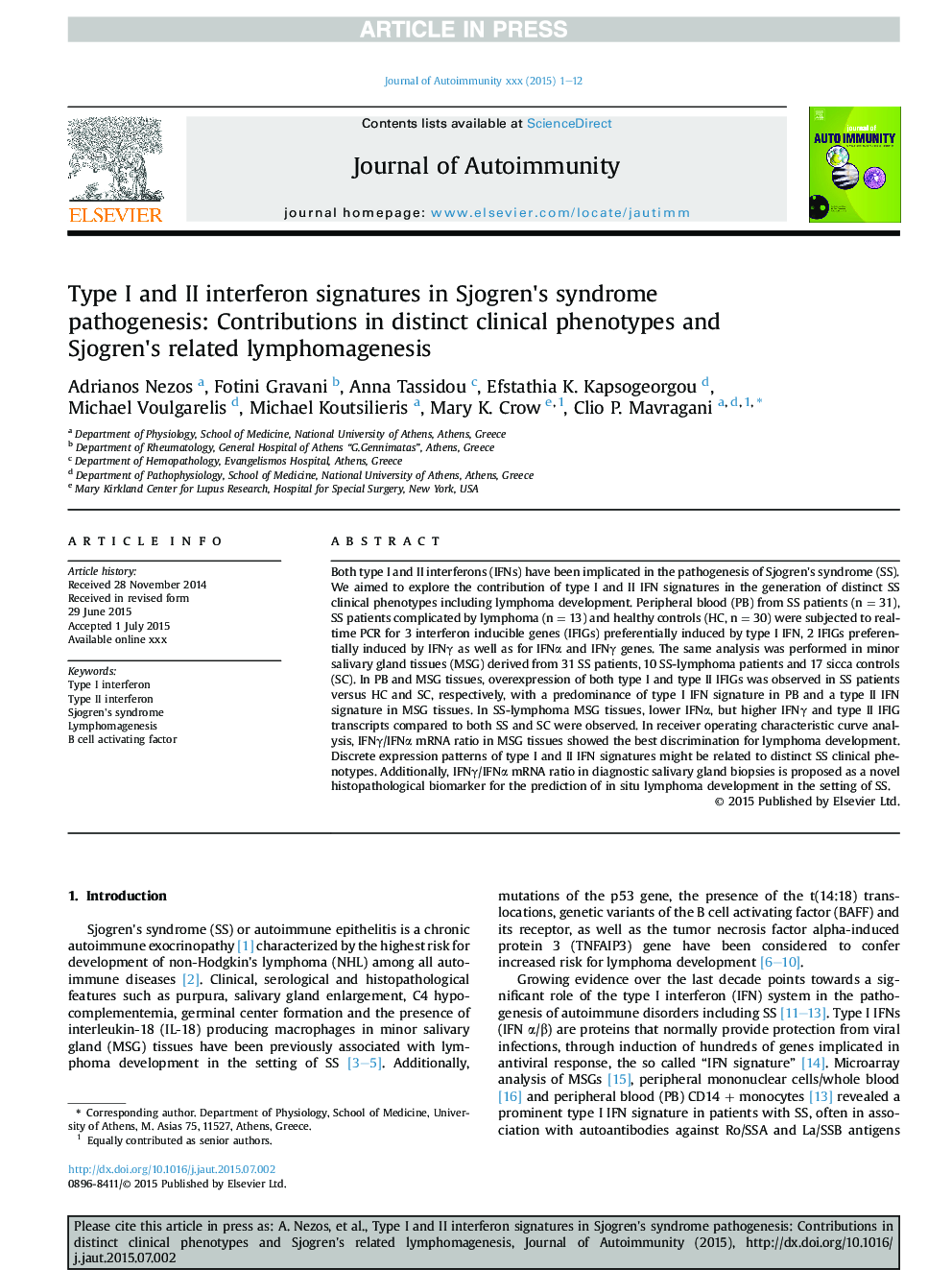| Article ID | Journal | Published Year | Pages | File Type |
|---|---|---|---|---|
| 6119204 | Journal of Autoimmunity | 2015 | 12 Pages |
Abstract
Both type I and II interferons (IFNs) have been implicated in the pathogenesis of Sjogren's syndrome (SS). We aimed to explore the contribution of type I and II IFN signatures in the generation of distinct SS clinical phenotypes including lymphoma development. Peripheral blood (PB) from SS patients (n = 31), SS patients complicated by lymphoma (n = 13) and healthy controls (HC, n = 30) were subjected to real-time PCR for 3 interferon inducible genes (IFIGs) preferentially induced by type I IFN, 2 IFIGs preferentially induced by IFNγ as well as for IFNα and IFNγ genes. The same analysis was performed in minor salivary gland tissues (MSG) derived from 31 SS patients, 10 SS-lymphoma patients and 17 sicca controls (SC). In PB and MSG tissues, overexpression of both type I and type II IFIGs was observed in SS patients versus HC and SC, respectively, with a predominance of type I IFN signature in PB and a type II IFN signature in MSG tissues. In SS-lymphoma MSG tissues, lower IFNα, but higher IFNγ and type II IFIG transcripts compared to both SS and SC were observed. In receiver operating characteristic curve analysis, IFNγ/IFNα mRNA ratio in MSG tissues showed the best discrimination for lymphoma development. Discrete expression patterns of type I and II IFN signatures might be related to distinct SS clinical phenotypes. Additionally, IFNγ/IFNα mRNA ratio in diagnostic salivary gland biopsies is proposed as a novel histopathological biomarker for the prediction of in situ lymphoma development in the setting of SS.
Keywords
Related Topics
Life Sciences
Immunology and Microbiology
Immunology
Authors
Adrianos Nezos, Fotini Gravani, Anna Tassidou, Efstathia K. Kapsogeorgou, Michael Voulgarelis, Michael Koutsilieris, Mary K. Crow, Clio P. Mavragani,
